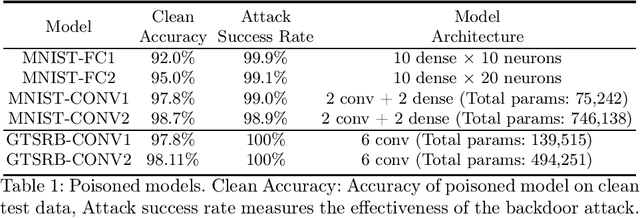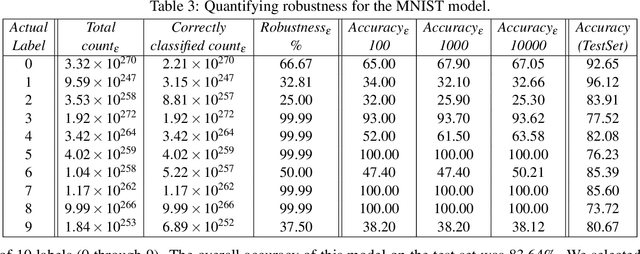Corina S. Păsăreanu
KBR Inc., CMU, Nasa Ames
VPN: Verification of Poisoning in Neural Networks
May 08, 2022



Abstract:Neural networks are successfully used in a variety of applications, many of them having safety and security concerns. As a result researchers have proposed formal verification techniques for verifying neural network properties. While previous efforts have mainly focused on checking local robustness in neural networks, we instead study another neural network security issue, namely data poisoning. In this case an attacker inserts a trigger into a subset of the training data, in such a way that at test time, this trigger in an input causes the trained model to misclassify to some target class. We show how to formulate the check for data poisoning as a property that can be checked with off-the-shelf verification tools, such as Marabou and nneum, where counterexamples of failed checks constitute the triggers. We further show that the discovered triggers are `transferable' from a small model to a larger, better-trained model, allowing us to analyze state-of-the art performant models trained for image classification tasks.
QuantifyML: How Good is my Machine Learning Model?
Oct 25, 2021



Abstract:The efficacy of machine learning models is typically determined by computing their accuracy on test data sets. However, this may often be misleading, since the test data may not be representative of the problem that is being studied. With QuantifyML we aim to precisely quantify the extent to which machine learning models have learned and generalized from the given data. Given a trained model, QuantifyML translates it into a C program and feeds it to the CBMC model checker to produce a formula in Conjunctive Normal Form (CNF). The formula is analyzed with off-the-shelf model counters to obtain precise counts with respect to different model behavior. QuantifyML enables i) evaluating learnability by comparing the counts for the outputs to ground truth, expressed as logical predicates, ii) comparing the performance of models built with different machine learning algorithms (decision-trees vs. neural networks), and iii) quantifying the safety and robustness of models.
* In Proceedings FMAS 2021, arXiv:2110.11527
 Add to Chrome
Add to Chrome Add to Firefox
Add to Firefox Add to Edge
Add to Edge